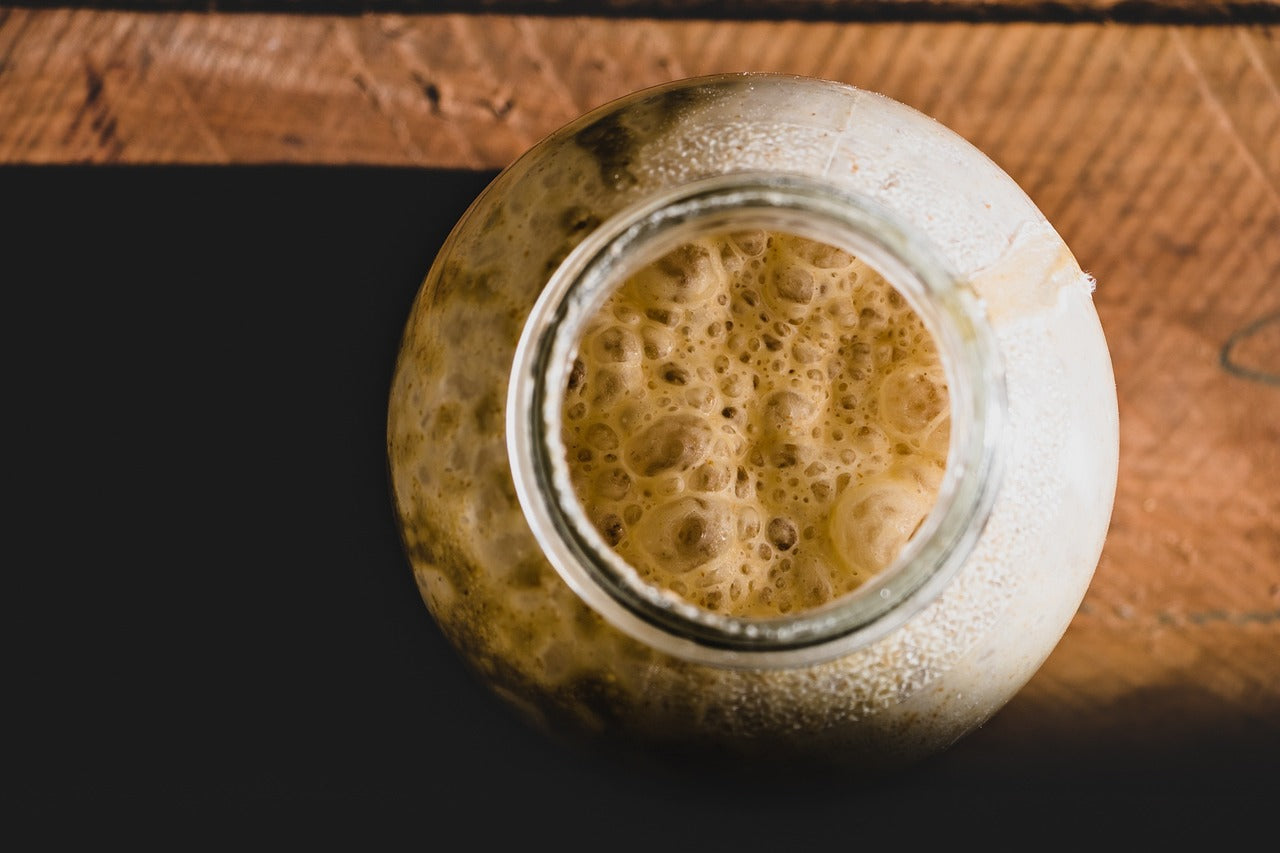
Yeast vs Chemical Leavener in Baking
Posted on
In the world of baking, leaveners play a crucial role in creating light and fluffy baked goods. Although there are various different kinds of leaveners, the most common (which you’re all probably familiar with) are wild yeast, commercial yeast, and chemical leaveners such as baking powder and baking soda. In this article, we’ll compare all three, discussing their unique properties, how they differ, and how to use them in your baking.
Wild Yeast
Wild yeast is arguably the most difficult type of leavener to work with. It needs a certain environment to thrive, and can take a lot of trial and error. As said by the writers of Masterclass, “[wild] yeast is a living microorganism that feeds on carbohydrates and releases carbon dioxide and alcohol.” And believe it or not, these microorganisms can be found in the air, on your plants, on your skin, or anywhere else in your home.
A unique aspect of wild yeast is that it can help produce complex (and slightly sour) flavors and aromas. In baking, wild yeast is most commonly used for sourdough bread, or any other type of sourdough baked good (see out article here *LINK* on how to make sourdough waffles!). When making sourdough, the starter dough captures the wild yeast which then ferments over the course of a few days. With regular feedings of flour and water, the yeast continues to grow and eventually helps create a super airy and pungent sourdough starter. Note that working with wild yeast can present challenges due to its sensitivity to temperature changes and specific feeding requirements.
Commercial Yeast
Commercial yeast can come in a few different forms and is what you would typically use when baking bread, buns, and other simple yeasted doughs. The different forms include active dry yeast, instant yeast, and fresh yeast, which can be a bit more difficult to find in the United States (more commonly sold in Europe). Here is how they differ:
-
Fresh yeast comes in cubes, is crumbly, and has a higher moisture content. It’s also often better for longer and slower rises as it stays active for longer than instant or active dry yeast.
-
Active dry yeast is a dehydrated yeast powder that needs to be rehydrated and activated before mixing it with the rest of the dough ingredients. This form of yeast doesn’t require as much proofing time as fresh yeast.
-
Instant dry yeast is also a dehydrated powder, except it can be mixed in with the rest of the dough ingredients without being rehydrated and activated in water. As per Masterclass, you can use active dry and instant dry interchangeably, give or take 15 minutes of proofing time.
Unlike wild yeast, commercial yeast significantly decreases the fermentation and proofing times, making it a much more convenient option for home bakers. With that being said if you’re baking bread, it’s important to note that bread made with commercial yeast might be less flavorful, less chewy, and less dense than if you were to use a form of wild yeast, such as a sourdough starter.
Chemical Leaveners
Chemical leaveners such as baking powder and baking soda are probably the ones you are most familiar with. They’re inexpensive, they’re very easy to work with, and–as long as they aren’t expired–are guaranteed to work. Unlike wild yeast and commercial yeast, they don’t require any fermentation or proofing time, which allows for convenience and reliability. According to Leslie Jeon of The Bakers Almanac, “Chemical leaveners work by reacting with water, salts, acids, or other substances to produce carbon dioxide, which causes pastry and bread dough to rise.” They’re most commonly used for muffins, cookies, cakes, as well as the occasional quick bread. They can also be used in combination with other leaveners, such as whipped eggs and yeast, to provide additional rise and texture. That being said, you have to be careful with the amount you use as it can greatly affect the outcome of what you’re baking. Here are some tips and tricks:
-
For baking powder, the rule of thumb is to use 1 teaspoon of baking powder per 1 cup of flour. For baking soda, you only need 1⁄4 teaspoon per 1 cup of flour.
-
Check to make sure they are not expired. Expired chemical leaveners will lead to deflated and dense cakes.
Takeaway
Understanding the difference between wild yeast, commercial yeast, and chemical leaveners is important if you want to succeed in the kitchen. Some leaveners demand more patience and time, while others offer quick, reliable results. When choosing your leavener, think about which one makes the most sense for the type of baked good you’re making. If you’re making cookies, use a chemical leavener. If you’re making cinnamon buns, use commercial yeast, and if you want to make a flavorful, chewy bread with a longer shelf life, use a wild yeast starter.

Leave a comment: